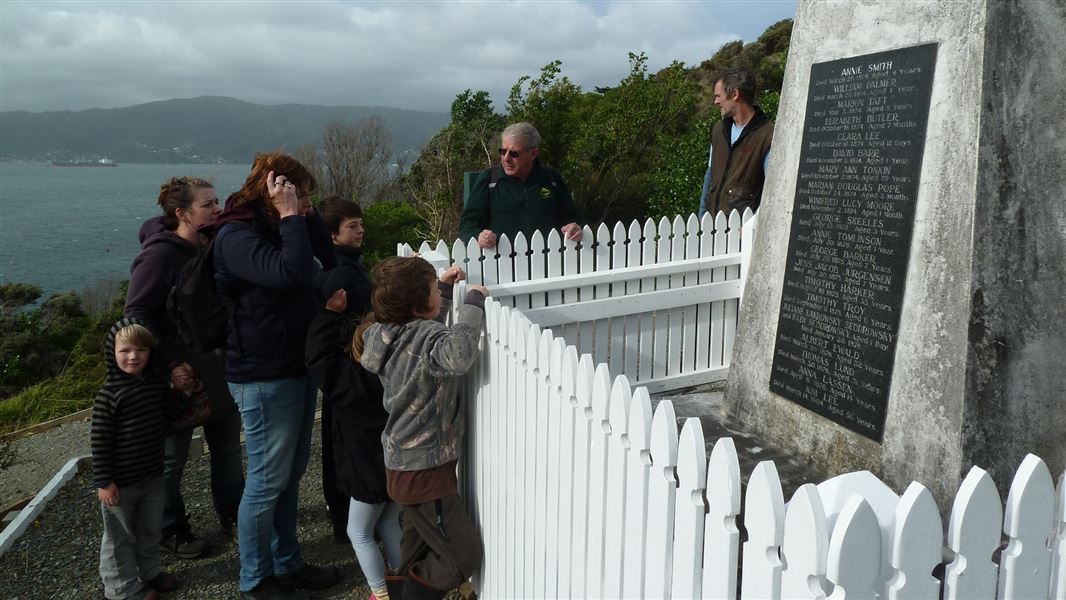
Introduction
Matiu/Somes was the first experience of New Zealand for many new immigrants. For some it was their last. Learn more about this part of the island’s past.Islands close to major settlements were often used to quarantine people with highly infectious diseases and Somes Island was no exception.
Protecting a nation
Being an isolated island nation, New Zealand was keen to protect itself from diseases such as typhoid, smallpox and scarlet fever. Immigrants arriving in Wellington harbour were cleared through Somes Island. Wellington's new arrivals were made to sit in a smoke house, in chlorine, potassium nitrate and sulphur fumes, for 10 minutes to get rid of lice.
In 1872 the immigrant ship ‘England’ arrived with several cases of smallpox on board. The crew and passengers were quarantined on Somes Island in make-shift accommodation and this led to the establishment of a quarantine station. While the island’s quarantine services were in use for decades, it was busiest between 1872 and 1876 when many ships required isolation. The young were most at risk as reflected in the ages of the people buried on the island. The island has not been used for human quarantine since the end of World War I.
Leper Island
One of the most tragic quarantine cases involved Chinese fruiterer, Kim Lee. Lee was suspected of having leprosy and was isolated on Mokopuna Island, just north of Somes in 1903. He lived in the cave on the eastern side of Mokopuna, and was given packing cases to make furniture and shelter. The lighthouse keeper delivered food and water to him by boat, or by flying fox when the sea was too rough. Lee died in 1904 after six months of exile. While it is now thought that Lee may have had tuberculosis or an auto-immune disease rather than leprosy, the island is still known as Leper Island to this day.
Today
- The remains of the brick smokehouse can be seen on the shore, just south of the wharf.
- In the 1970s a memorial cairn was erected to remember those buried on the island. The cemetery was located on the slopes below.
- One building with a strong association with human quarantine is the old barracks building. The barracks was hastily erected by the Health Department in 1919, in preparation for expected casualties of the influenza pandemic. The barracks was later used as accommodation for enemy aliens during World War II, and today only half of the original building remains.
Brochure
Matiu/Somes Island human quarantine station (PDF, 1481K)
Related links
- Government services Historic heritage topic
- Quarantine centres and prisons Te Ara Encyclopedia of NZ
